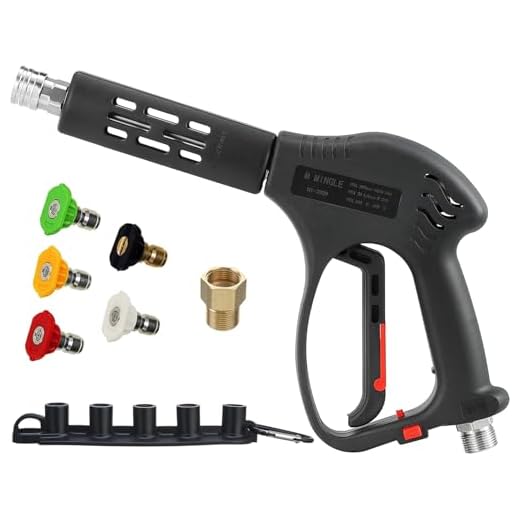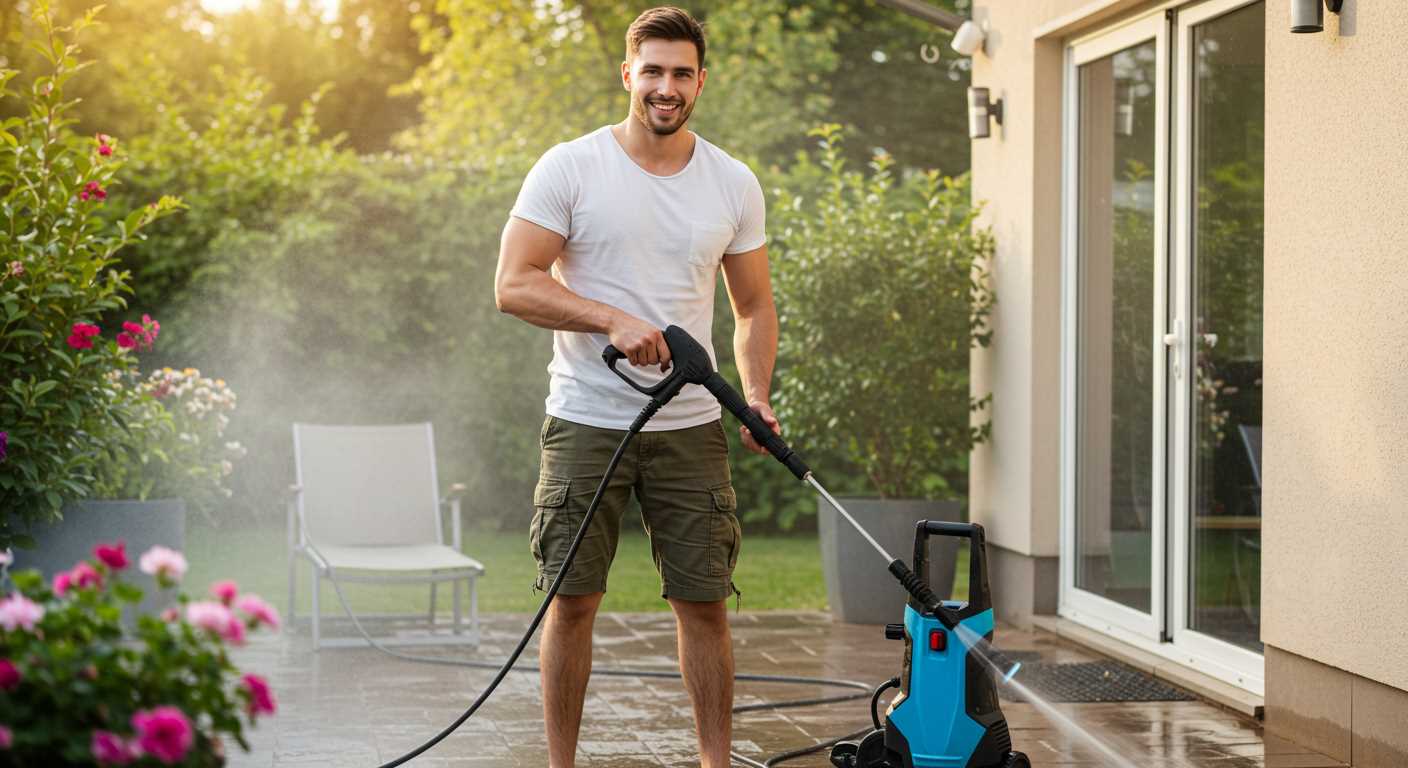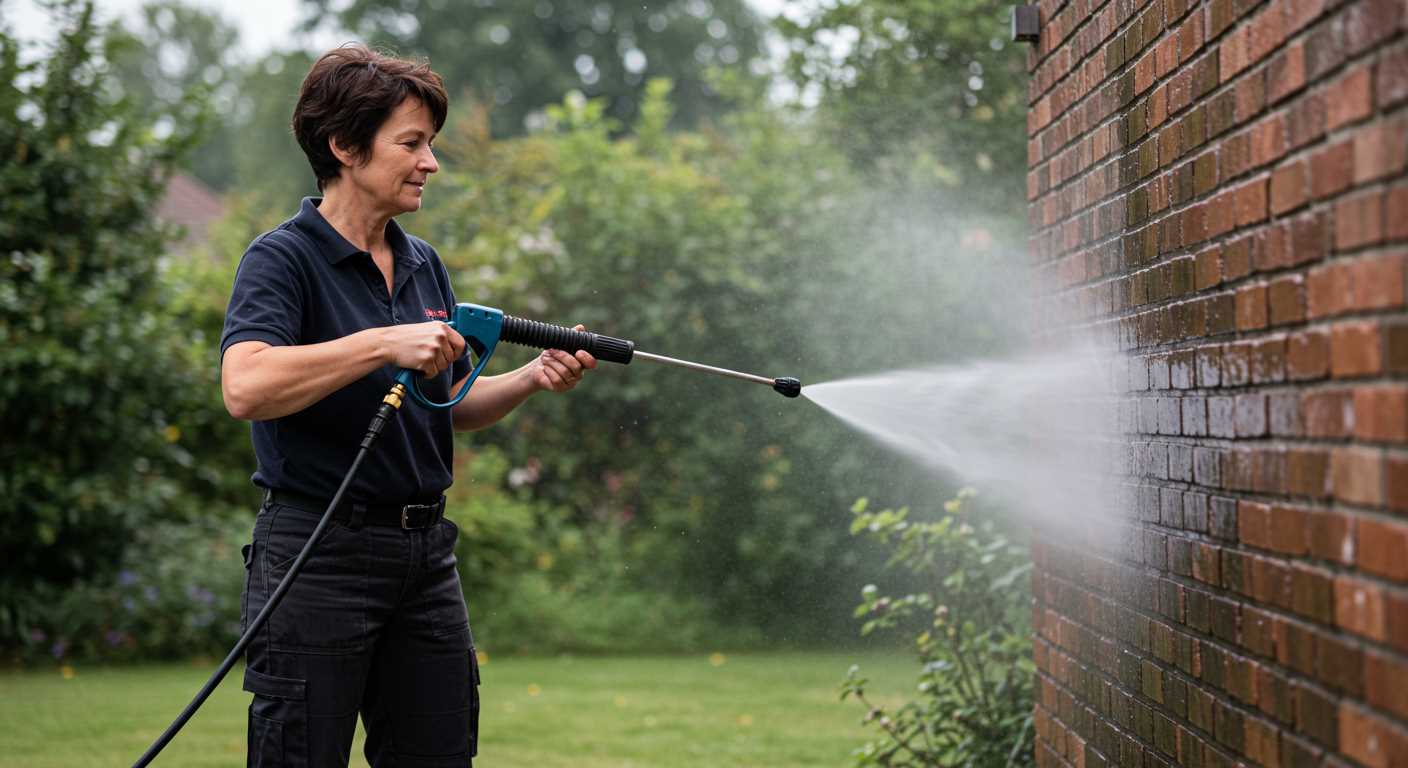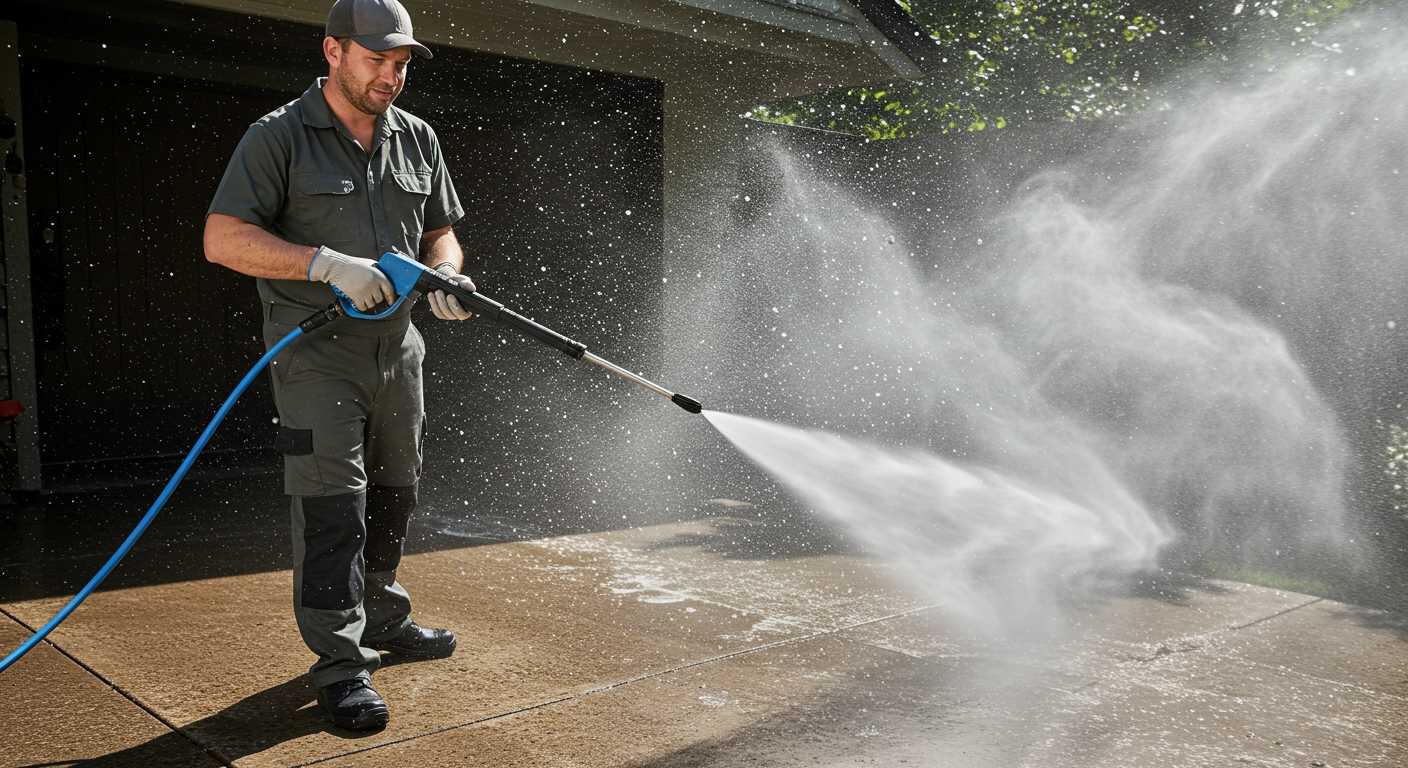



For effective and gentle washing of vehicles, I recommend a unit with a rating between 1200 and 1900. This range provides sufficient power to remove dirt while minimizing the risk of damaging sensitive surfaces.
A unit at the lower end, around 1200 psi, is perfect for regular maintenance, ensuring a thorough clean without excessive force. It works well on standard household grime found on painted and glass surfaces. On the other hand, if your vehicle requires more intense cleaning–like stubborn mud or road salt–a model up to 1900 psi will tackle these challenges efficiently.
Before using any machine, check the manufacturer’s guidelines for your vehicle. Furthermore, I always advise employing a fan nozzle or low-pressure setting to ensure that water pressure is even and distributed gently. This approach protects the integrity of seals, paint, and other sensitive components.
Choosing the right device ensures you maintain the aesthetics and value of your vehicle, making the cleaning process both safe and effective. Investing in a quality machine tailored to meet these specifications will pay off in the long run.
Recommended Pressure Level for Vehicle Cleaning
For optimal results without risking damage, I suggest using a cleaning unit that operates between 1200 and 1900 pounds per square inch. This pressure range effectively removes dirt and grime from surfaces without harming the finish of your vehicle.
When selecting a model, look for additional features such as adjustable nozzles which allow for better control over water flow. A 25-degree nozzle is typically suitable for general cleaning, while a lower angle is effective for tougher spots.
It’s advisable to maintain a distance of approximately 2 feet from the vehicle’s surface during cleaning. This precaution helps to prevent any potential chipping or paint damage.
Always choose a unit with a detergent capability. Using soap specifically formulated for vehicles enhances cleaning effectiveness while being gentle on the paint. Apply soap with low pressure, rinse thoroughly, and then switch back to the recommended pressure settings for final rinsing.
Regularly inspect the equipment to ensure no damage exists, and use a suitable extension cord if necessary. Following these guidelines will keep your vehicle looking pristine without compromising its integrity.
Understanding PSI Ratings for Pressure Washers
When selecting the right equipment for vehicle cleaning, it’s important to pay close attention to the numerical ratings displayed on the machines. Generally, a maximum rating of 1200-1900 units is advisable for most vehicles. This level provides sufficient power for the removal of dirt and grime without putting your vehicle’s clear coat or sensitive components at risk.
Categories of Power

There are three primary classifications based on intensity: light-duty, medium-duty, and heavy-duty. Light-duty models, commonly below 1500 units, are ideal for regular undercarriage maintenance and light surface washing. Medium-duty units, ranging from 1500 to 2000 units, can handle more stubborn residues and are suitable for detailed cleanings, including wheels and reflective surfaces. Heavy-duty options, exceeding 2000 units, should be approached with caution as they can pose a threat to delicate finishes.
Benefits of Lower Ratings

Opting for lower ratings benefits both the cleaning process and your vehicle. The chances of damaging paint, trims, or sensitive fixtures, such as window seals, diminishes significantly. Additionally, these units tend to consume less energy and water, promoting both cost-efficiency and environmental responsibility.
Remember that technique matters just as much as equipment. Maintain a safe distance, approximately 2 to 3 feet, from surfaces while cleaning, and always test a small area before proceeding with the entire job to ensure compatibility with your vehicle’s finish.
Recommended PSI Range for Car Washing
For optimal results while cleaning your vehicle, I recommend using a device within the range of 1200 to 1900 PSI. This level ensures effective dirt and grime removal without causing harm to your vehicle’s finish.
- 1200 to 1300 PSI: Ideal for sensitive surfaces, such as painted finishes and glass. This setting is perfect for routine cleaning and maintenance.
- 1300 to 1600 PSI: Good for standard cleaning tasks. This range provides a bit more power for tougher grime while remaining gentle on the vehicle.
- 1600 to 1900 PSI: Suitable for extra-stubborn stains and heavier debris, such as mud or bird droppings. Ensure the nozzle is appropriately adjusted to avoid damage.
Utilising a fan spray nozzle at these settings helps distribute the force more evenly and reduces the risk of paint chipping or scratching. Regular rinsing and not holding the nozzle too close can also prevent any unintended harm.
Always remember to test a small, inconspicuous area first. This simple step ensures compatibility with your vehicle’s finish and helps you adjust the settings accordingly. Following these guidelines will lead to a thorough and safe cleaning process.
Impact of Higher PSI on Vehicle Surfaces
Utilising elevated pressure levels can severely compromise the integrity of a vehicle’s exterior. When exceeding recommended thresholds, there are several potential effects on paint, trim, and various finishes.
- Paint Damage: High-pressure streams may strip off the clear coat and even the base paint, leading to peeling or fading. This is particularly risky for older paints or those that have not been maintained properly.
- Plastic and Trim Issues: Higher force can warp or crack plastic components, such as bumpers and trim pieces. Frequent exposure increases the likelihood of these issues arising.
- Seal Integrity: Seals around windows and doors are vulnerable to deterioration under excessive pressure, which can result in leaks and other complications.
- Wheel and Tyre Damage: Overly aggressive cleaning on wheel wells or tyre surfaces may degrade the rubber materials, reducing their lifespan and safety.
To mitigate risks, maintaining pressure below 2000 is generally advisable, allowing for effective cleaning without jeopardising vehicle aesthetics. Additionally, utilising appropriate spray nozzles can help disperse force, further protecting delicate surfaces.
Regular inspections post-wash can aid in detecting any damage early, ensuring long-term vehicle maintenance and appearance remain intact.
Choosing the Right Nozzle for Car Cleaning
For optimal results, select a nozzle that complements the cleaning task. A wide fan nozzle, typically rated at 25 degrees, is ideal for full vehicle washes. This nozzle covers more area while delivering adequate water pressure to remove grime without damaging surfaces.
Specifications of Nozzles
Understanding nozzle types is crucial. Here are the common varieties:
| Nozzle Type | Angle | Best For |
|---|---|---|
| 0-degree | 0° | Heavy-duty stains, directed cleaning |
| 15-degree | 15° | Concrete, tough dirt |
| 25-degree | 25° | Vehicles, wider surfaces |
| 40-degree | 40° | Delicate surfaces, windows |
| Soap nozzle | Varies | Applying cleaning solutions |
Tips for Nozzle Use
Maintain an appropriate distance–approximately 2 to 3 feet–when cleaning. This prevents potential damage while ensuring proper coverage. Start from the top and work your way down to allow dirt and soap to flow away from the vehicle. Always test on a small, inconspicuous area before tackling larger sections to ensure a suitable cleaning effect.
Choosing the right nozzle can significantly enhance the cleaning experience and achieve sparkling results without risks to your vehicle’s finish.
Benefits of Using a High-Pressure System Over Manual Washing
Transitioning to a high-pressure system offers several advantages compared to manual scrubbing. First, the significant reduction in time needed to achieve a thorough clean stands out. A system can effectively wash an entire vehicle in a fraction of the time spent by hand, particularly when dealing with stubborn grime and dirt.
Another notable benefit is the consistency in cleaning outcomes. Using a high-pressure device ensures an even distribution of water and detergent across the surface, leading to uniform results that may be challenging to achieve manually. This consistency also reduces the risk of missed spots or uneven cleaning, enhancing the overall appearance of the vehicle.
Enhanced Cleaning Power
The force generated by the system aids in removing contaminants such as tree sap, road tar, and mud without excessive physical effort. With the appropriate attachment, this tool allows for deep cleaning of wheels, wheel wells, and other hard-to-reach areas. Unlike manual scrubbing, which often involves excessive pressure and scrubbing motions that can be tiresome, the power offered by high-pressure systems effectively lifts dirt and debris with minimal physical strain.
Water Efficiency
Modern high-pressure systems are designed to use less water than traditional washing methods while providing superior results. This efficiency not only conserves water but also minimises the run-off of soap and dirt into the environment. Given the advancements in technology, choosing a high-pressure device can lead to a more eco-friendly washing process, aligning with sustainable practices.
Common Mistakes When Using a High-Pressure Cleaner on Vehicles
Avoid using narrow nozzles intended for stubborn surfaces on your vehicle. These can cause scratches on paintwork. Instead, opt for a wider nozzle, preferably a fan-shaped one, to disperse the stream over a larger area, reducing the risk of damage.
Incorrect Distance from the Surface

Standing too close to the automotive surface can lead to unintended dents and paint stripping. Maintaining a distance of at least 2-3 feet is advisable for optimal results without compromising the integrity of the finish. Adjusting the distance helps in achieving a thorough clean without the harmful effects of excessive force.
Ignoring the Temperature of the Water
Using extremely hot water can warp components, particularly plastics and rubbers in certain regions. Stick with lukewarm water to ensure all components remain intact while still effectively removing grime. Additionally, ensure that any detergent used is compatible with the vehicle’s surfaces to avoid any adverse reactions.
Neglecting to pre-rinse can also lead to problems. This step helps to remove loose dirt and debris, minimising the chances of scratching during the cleaning process. Always take a few moments to do this preliminary clean.
Lastly, skipping protective measures post-cleaning can result in quicker re-soiling. Applying a wax or sealant after washing helps to protect the paint and provides a durable barrier against future contaminants, ensuring your vehicle maintains its appearance longer.
Tips for Safe Pressure Washing of Vehicles
Always maintain a distance of at least 2 feet from the vehicle’s surface while using the equipment to prevent damage. This distance allows for effective cleaning without risking the integrity of the paint and trim.
Start with the lowest setting available on your machine and gradually increase pressure if necessary. Testing on an inconspicuous area first can help gauge the suitable force needed for your specific vehicle.
Utilise the correct nozzle; a wide-angle nozzle (25- or 40-degree) is ideal as it disperses water evenly and reduces the risk of damage. Avoid using narrow nozzles that concentrate force and may harm delicate finishes.
Make sure to keep the nozzle moving while cleaning. Staying too long on one spot can cause paint stripping and surface abrasion. A sweeping motion will ensure thorough cleaning without excessive pressure on any one area.
Prior to washing, rinse the vehicle with regular water to remove loose dirt and debris. This reduces the risk of scratching during the cleaning process by preventing dirt from being blasted into the vehicle’s surface.
Incorporate the use of appropriate detergents or cleaning solutions designed specifically for automotive surfaces. This can enhance cleaning efficiency while being gentle on the vehicle’s finish.
Never direct the stream towards areas like the engine compartment, wheels, or undercarriage unless specifically designed to withstand such pressure. Water intrusion into sensitive areas can lead to electrical issues and rust.
Always wear protective gear, including goggles and gloves, to safeguard against any accidental sprays. Additionally, ensure the area is clear of bystanders and pets to prevent any mishaps during washing.
Take caution when washing vehicles with delicate finishes, such as those with high-gloss or custom paint. Test all techniques gradually and be prepared to adapt as needed for optimal results.
After completing the task, inspect the vehicle thoroughly for any missed spots or areas requiring further attention before drying. This ensures a complete clean without overlaps or streaks.
Maintaining Your Cleaning Equipment for Vehicle Care
Regular upkeep of your cleaning device prolongs its lifespan and enhances performance. I recommend flushing the system with clean water after each use to eliminate any soap or residue that could cause clogs. This simple process prevents build-up and keeps the nozzles functioning optimally.
Inspect hoses and connections routinely for wear and leaks. Replace any damaged parts immediately to ensure consistent water delivery and avoid pressure loss. Keeping all components clean and free from debris is key to avoiding common operational issues.
Additionally, check the motor and pump settings. Proper lubrication of moving parts reduces friction and wear, ensuring that your equipment runs smoothly. Follow the manufacturer’s recommendations for oil changes and maintenance intervals to maintain peak functionality.
Storing this equipment in a dry, protected area helps avoid exposure to harsh temperatures or moisture, which can damage sensitive components. If storing for an extended period, consider winterising procedures to protect the machine from cold-related damage.
Using quality detergents specifically designed for automotive finishes is crucial. Poor-quality cleaning agents can lead to damage, reducing the effectiveness of the equipment. Always adhere to guidance on product usage and dilution to safeguard your vehicle’s surfaces.
Finally, consider conducting periodic professional servicing. Having a specialist examine your equipment can help identify any potential issues early and maximise its effectiveness. This proactive approach saves time and money in the long run.









